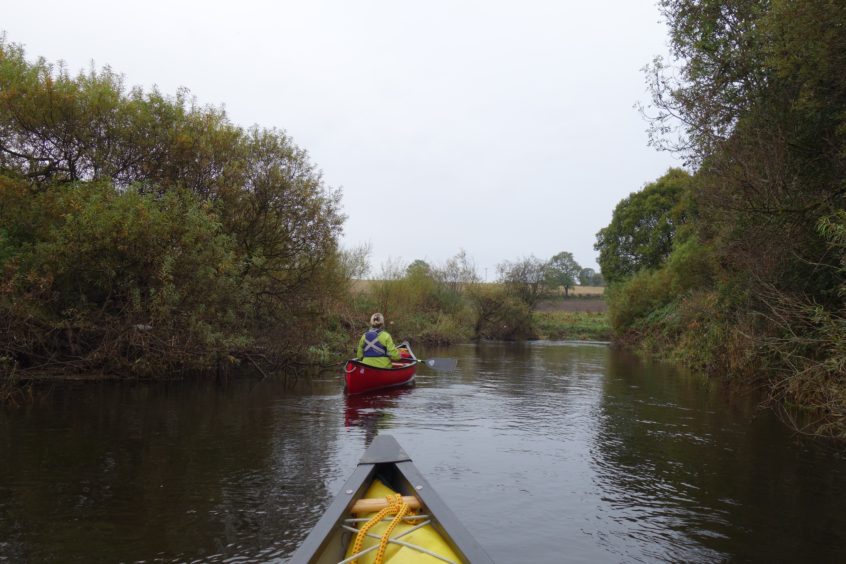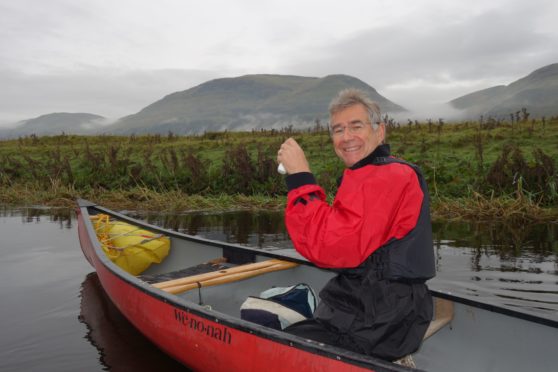I am writing a book on a wildlife year on the River Devon in Clackmannanshire – but I had a problem, for a large stretch of the lower river is relatively inaccessible by foot.
The solution was obvious, I needed to take to the water, and as such, I was delighted when local canoe expert Janet Peck invited me along for a wildlife exploration trip from Alva all the way down to the inner Forth at Cambus where the river spills out into the sea.
As we set off on a calm Sunday morning, Janet’s canoe glided effortlessly ahead while mine zig-zagged erratically as I tried to come to terms with how to guide it properly.
But no matter, for the river was awash with life, and not long after our departure, a flash of dazzling electric blue whizzed low over the water ahead of us and alighted in a willow – a kingfisher!
We stopped paddling, letting the current draw us forward, but kingfishers are notoriously shy, and this one quickly zipped away and out of sight.
Kingfishers are on the edge of their geographical range in this part of Scotland and are vulnerable to cold winters, but they seem to be doing well on the River Devon at the moment.
A swirl of ripples appeared ahead of us, and a dabchick bobbed up in the water. It seemed unsure what to make of the two canoes, before deciding upon safety first and diving under the surface once more.
Dabchicks are the masters of concealment, and I knew from watching them on the river before that this bird would have swum underwater to the bankside, from where it would hide in the thick overhanging vegetation waiting for the potential threat to pass.

This part of the River Devon is almost canal like, with the water being deep and lethargic, which is in stark contrast to the upper part of the river, which is fast flowing and tumbling. Willows arched over many parts of the river, and one of the most striking elements was the abundance of Himalayan balsam on the banksides.
Himalayan balsam is an introduced species and its tall invasive growth shades out indigenous plants and the die-back of extensive stands over winter can leave riverbanks bare and exposed to erosion. Pollinators adore balsam, but the problem is that their brassy blooms detrimentally lure nectar seeking insects away from native flowers, upsetting the natural equilibrium.
But despite these unnatural influences on the environment, we spotted plenty of native wildlife on our three hour journey to Cambus, including grey wagtails, herons, moorhens and many mute swans.
As we pulled our canoes out of the water at the end, Janet and I reflected upon the remoteness of this section of the river, despite it lying in a populated part of central Scotland. By taking to the water, we had experienced a wonderful tranquil wildlife world; a place where surprises lay at every turn.
Info
Keith was a guest of the Alva-based CR Cats performance canoe club that offers a wide variety of training sessions for youngsters. More details at www.crcats.org










